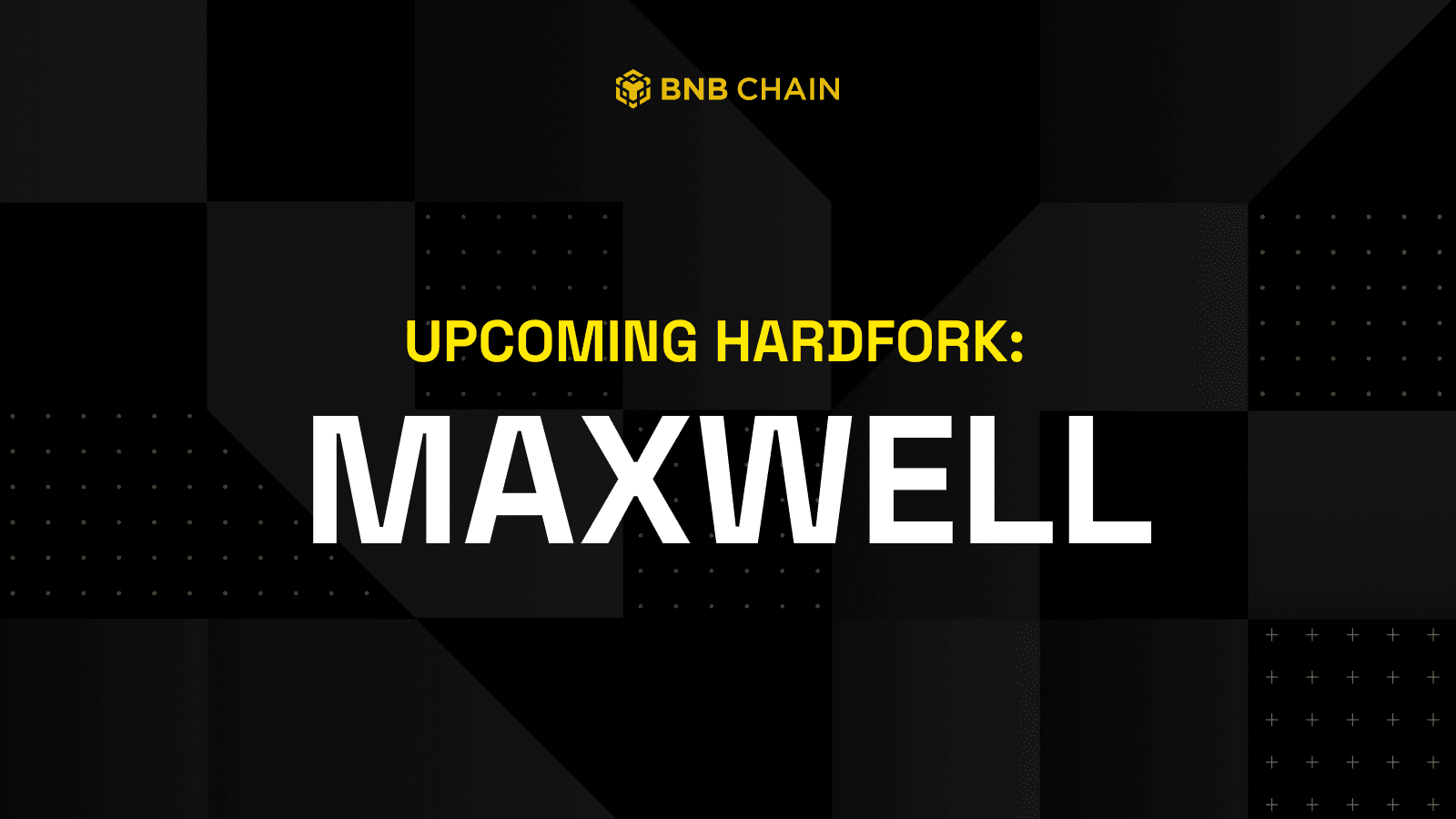In June 2025, the BNB chain will still undergo one of the most critical upgrades – the Maxwell hardfork. Comes after the Pascal and Lorentz hardforks, Maxwell is not just another update. It is a strategic upgrade that is designed to significantly improve the speed, stability and edge of the BNB smart chain in today’s fast-moving blockchain space.
What is the Maxwell -hardfork?
Maxwell is a protocol -upgrade that reduces the block times of BNB chain from 1.5 seconds to just 0.75 seconds. This is an important improvement in Lorentz Hardfork in April, which had already reduced the interval in two from 3 seconds to 1.5.
By shortening block intervals, Maxwell will make any interaction on BSC, whether it is a tokens swap, NFT Mint or Dapp promotion, feels almost immediately.
This improvement is designed to support the increasing demand for high-frequency trade, DEX transactions and the flourishing memecoin space on the BNB chain. The upgrade is intended to speed up not only transactions, but also to reduce congestion and to improve the overall user experience.

Image: BNB chain
Why speed matters
Block Time is an important performance statistics for every blockchain. Faster blocks mean faster confirmation, faster finality and less waiting. With the Maxwell -upgrade, the finality on the BNB chain can now be reached in just 1,875 seconds.
This makes it possible to arrange transactions in real time, which is crucial for everything, from financial trade to gaming. In short, the Maxwell Hardfork turns BNB chain into a faster and responsive network, so that it is pushed ahead into the race with Ethereum and other smart contract platforms.
The core proposals: BEP-524, BEP-563 and BEP-564
Maxwell is powered by three technical proposals that work together to stimulate performance and network integrity:
Bep-524: 0.75 seconds block intervals
This proposal halves the block time again and builds on the momentum of Lorentz. It makes faster transaction confirmations possible, stimulates the responsiveness of Dapp and unlocks better UX for Defi and Gamefi platforms.
BEP-563: Improved validator communication
Faster blocks means that Validators must achieve consensus more efficiently. BEP-563 improves peer-to-peer messages, reducing synchronization tracing and missed voices. This ensures that validators can keep track of the higher frequency.
BEP-564: Smarter Synching Mechanism
This proposal adds two new messages to the protocol – Getblocksbyangemsg and Rangeblocksmsg – that streamline the block synchronization process. Nodes can now request and receive multiple blocks in fewer steps, which improves network stability.
Implications for users and developers
For users, everything in the chain will simply feel faster. Swaps will complete earlier. Game movements register without delay. Transactions will almost disappear as soon as they are signed.
For developers, however, the upgrade calls for preparation. Logic -based logic in smart contracts may be revised to prevent errors under the shorter block intervals. The rapid pace of finality also opens new design options, but requires thorough tests.
Validators must prepare
Validators and junction operators must upgrade their systems prior to the Maxwell launch. The increase in the block frequency translates into a greater demand for accounts and faster consensus cycles.
Maxwell also brings changes to the validator roles:
- Era length Increases from 500 to 1000 blocks.
- Gymnastics length Jumps from 8 to 16 blocks (still 12 seconds per validator -turn with the new block speed).
- Rapidness Now happens in just under 2 seconds.
These adjustments ensure that the network remains stable, even if the speed doubles. Operators who do not update the risk that is left behind or losing consensus.
How Maxwell affects mev
The impact of Maxwell on the extraweer value of miners (MEV) is also remarkable. With only 0.75 seconds between blocks, MEV seekers and builders have less than a second to submit bids. Many strategies that worked in longer block windows may no longer be viable.
This limits the time for manipulation, which may create a fairer environment – but it also increases the bar for the willingness to infrastructure.
Timeline: What is the following?
May 20, 2025: Release available for testing
26 May 2025: Test network hardfork
June 30, 2025: MAINNET HARDFORK
The upgrade only goes live on the Mairet as soon as all test network exexit criteria is met. These include stable block production of 0.75 seconds, consistent validator synchronization and not a peak in chain trotes.
What should you do?
If you are a validator:
Update your software prior to the May Testnet Fork. Check the system performance and prepare for the increased workload.
If you are a developer:
Test your smart contracts and applications under the block interval of 0.75S. Watch out for racing conditions or synchronization -related bugs.
If you are an infrastructure provider or exchange:
Ensure compatibility with the updated network protocol. This includes RPCs, indexers, explorers and portfolios.
Maxwell hardfork from BNB Chain is part of a larger route map of 2025. Earlier upgrades such as Pascal (Smart Contract Wallets, Better EVM support) and Lorentz (block time halved to 1.5 seconds) set the stage. Now Maxwell pushes the limits of what is possible on BSC.
Together these upgrades want to make the BNB chain faster, cheaper and safer.

